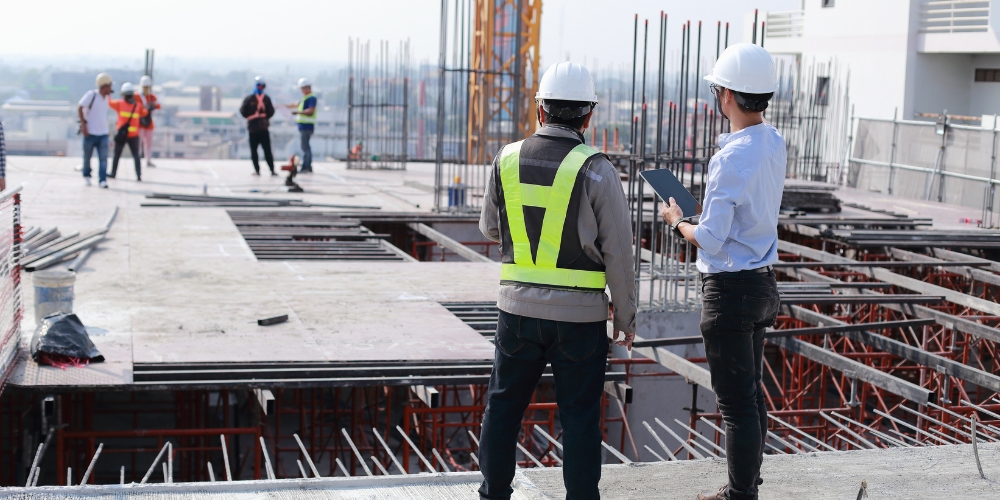Strict safety regulations and precision work are necessary in construction engineering to guarantee a seamless process. Safety is of most important on construction sites since they are hectic, dangerous locations with heavy machines and complicated duties. Adhering to appropriate safety procedures ensures project success and worker protection. Here are the main benefits of safety protocols as well as what they entail.
Construction Safety Essentials?
- Safety protocols in construction refer to a collection of guidelines and procedures intended to avert mishaps and injuries. These guidelines are predicated on best practices and industry standards. They address everything from personnel training and emergency response to equipment handling and site management.
- The major objective is to establish a secure workplace where possible risks are recognized and managed. This proactive strategy keeps things moving smoothly and reduces the risk of mishaps.
Essential Risk Components:
- Finding potential hazards on the site, such as potentially dangerous items, equipment, or situations, is the first stage in identifying potential hazards.
- Risk analysis involves identifying potential risks and assessing each one's likelihood of causing harm as well as any potential repercussions. This aids in selecting the safety precautions that need attention.
- Risk mitigation is taking action to lessen or eliminate dangers based on the results of the risk analysis. This could entail altering equipment, establishing safety protocols, or putting on safety gear.
Instruction and Training:
Workers must be well-trained in safety procedures, equipment operation, and emergency procedures. Everyone stays informed about safety precautions through regular training.
Safety certificates: Workers in specific occupations, such as electricians or crane operators, must hold specific certificates. Maintaining safety standards is aided by requiring these credentials of employees.
- Safety Gear and Equipment: Safety gear such as goggles, gloves, and helmets are examples of personal protective equipment (PPE) that keeps workers safe from harm. The proper PPE must be made available and enforced.
- Safety Labels: Workers are alerted to possible hazards and safe procedures by conspicuous signs and warnings.
- Administration and Monitoring of the Site: Regular site inspections are a useful tool for identifying and resolving safety concerns. The state of the site, the equipment, and compliance with safety regulations are all examined by inspectors.
- Supervision: In charge of overseeing the observance of safety procedures and handling any emerging safety issues.
Emergency Response Planning:
- Emergency Procedures: Having protocols in place for handling accidents, fires, and other emergencies is essential. These procedures address communication techniques, evacuation routes, and first aid procedures.
- Exercises & exercises: By taking part in frequent exercises, employees may practice emergency protocols and ensure that everyone knows what to do in an emergency.
Benefits of Safety Protocols:
- Minimizing Injuries and Fatalities: The primary advantage of safety measures is a decrease in mishaps and injuries. Taking care of dangers and offering training reduces the likelihood of accidents at work.
- Encouraging Health and Welfare: The general health and morale of employees are enhanced in a safe work environment. Employee motivation and productivity are more likely to be high when they feel safe.
Enhancing Project Efficiency:
- Reducing Downtime: Accidents and injuries can delay projects and increase costs. Safety protocols help prevent these issues, keeping projects on track and on budget.
- Improving Productivity: When safety concerns are minimized, workers can focus better on their tasks, leading to better project results.
Compliance and Legal Protection:
- Complying with Rules: Adhering to safety procedures guarantees adherence to industrial regulations, assisting in preventing legal problems and penalties.
- Reducing Liability: Adequate safety precautions shield the business and its workers from the possibility of accident-related lawsuits.
Developing a Favorable Image:
- Improving Company Image: Organizations with a solid safety record are often well-liked. More commercial opportunities and collaborations may result from this.
- Talent Attraction: An organization that has a solid safety record attracts skilled people who place a high priority on their safety.
Challenges in Implementing Safety Protocols:
- Resistance to Changes: requires clear communication and showing the benefits of the changes.
- Cost Considerations: Implementing safety measures involves costs for training, equipment, and inspections. Balancing these costs with the benefits of improved safety is essential.
- Keeping Up with Regulations: Safety laws are subject to change. Maintaining compliance requires keeping abreast of new regulations and adopting them into safety procedures, which can be difficult at times.
Conclusion :
Safety protocols are crucial in construction engineering and cannot be emphasized enough. Thorough safety protocols adhered to by construction organizations can safeguard employees, increase project output, maintain regulatory compliance, and foster a positive company image. For excellent and long-lasting results in the construction sector, safety must always come first, no matter how difficult the situation.





Comments